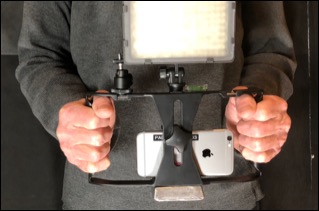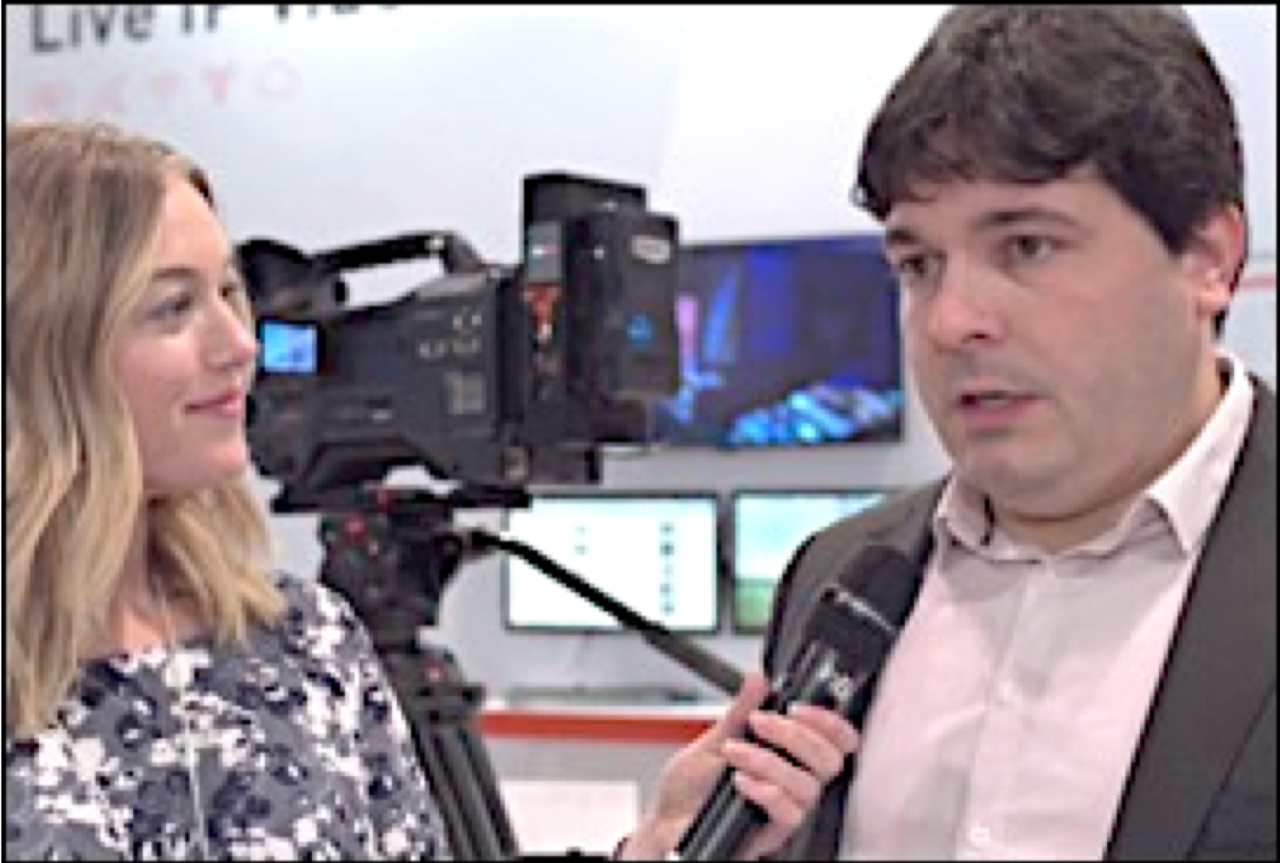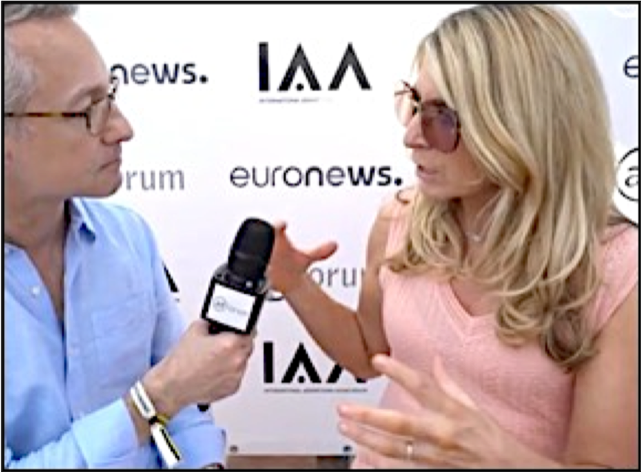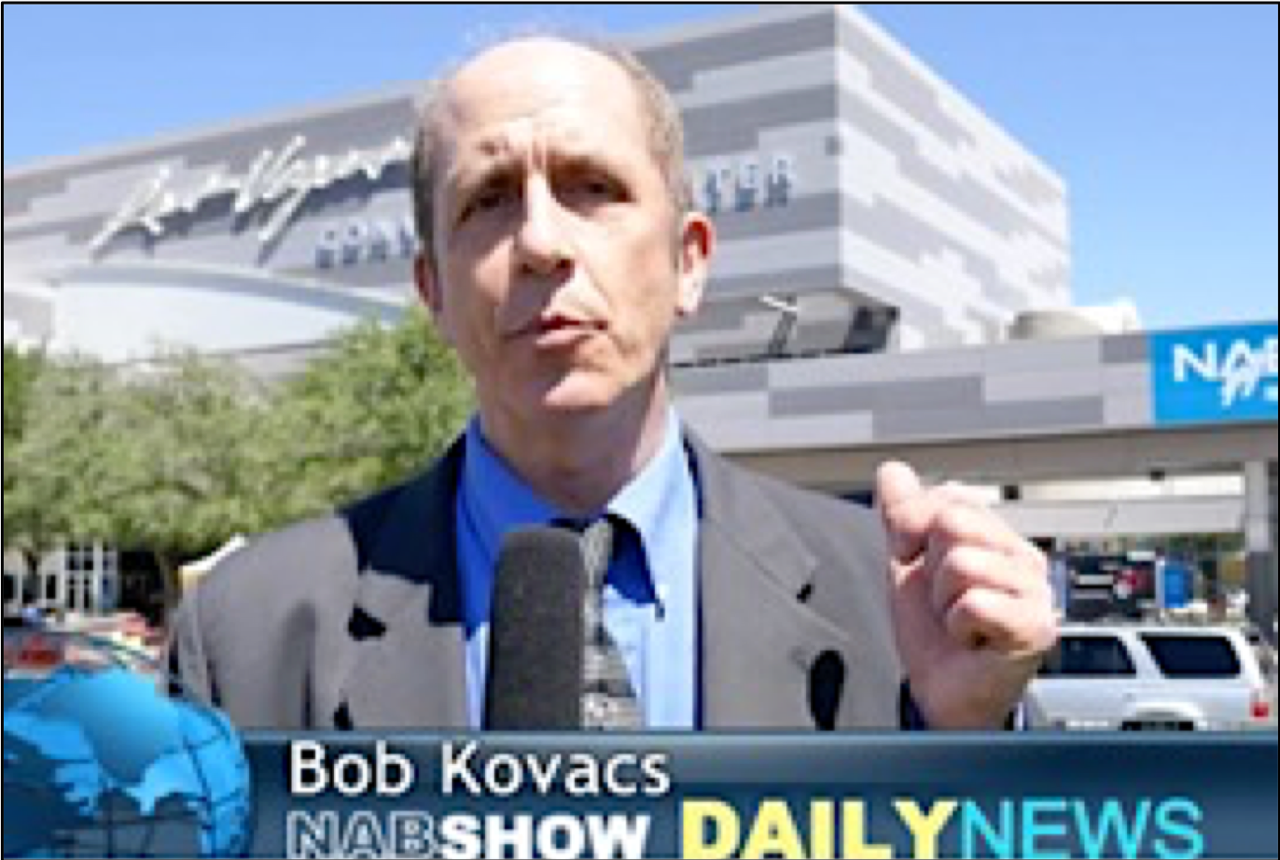Will Bonded Cellular Help Smartphones Kill ENG?
Part Idiscussed the current state of ENG and the move to mobile journalism
Part IIlooked at Euronews’ adoption of smartphone newsgathering
Part III looked at how Euronews NBC adopted iPhone journalism
Journalism, even journalism principals, has always been closely tied to innovation, invention and technology. Pencils, for example, enabled far quicker, more accurate notetaking than quill and ink. Many reporters used to learn shorthand to achieve New York World publisher Joseph Pulitzer’s admonition that the three most important words in journalism are “accuracy, accuracy and accuracy.”
The telegraph did not just vastly increase the speed and span of news acquisition and delivery. It was a key factor behind the objective reporting concept, succinct writing and inverted pyramid/main-facts-first style because of the high cost/low bandwidth of telegraph transmissions—not to mention the business case for non-partisan reporting.
The telegraph also spurred the creation of the Associated Press wire service, whose reporters delivered the same, neutral story to all member newspapers whose news coverage was otherwise highly biased.
"AP’s Broadcast News Handbook" summarizes the history:
AP came into being in 1848 and pioneered the notion of using the telegraph to distribute news to more than one point simultaneously. The AP had decided from its birth that it would present the news fairly and impartially. Covering the Civil War was one of the first big tests for The Associated Press, and it was a trial of fire of “objectivity”—an AP invention which was still considered an oddity in those days.
SMARTPHONE ENHANCEMENTS
Since the Civil War, an unending string of technologies has enhanced newsgathering and delivery. Huge lead-casting Linotype machines, for example, replaced typesetting by hand. Decades later phototypesetting rendered Linotype obsolete.
(The main reason I was selected editor of my campus newspaper in 1967 was my pledge to switch production from hot metal typesetting to lower cost, higher print quality offset.)
Today journalism is in crisis partly because of technology. The profession needs to deploy new technologies to dig out of that hole, technologies such as smartphones to replace ENG cameras and IP cellular transmissions from the news scene to the newsroom and from the newsroom to consumers.
Which brings us to bonded cellular technology and how it might help save journalism. But first a look at other smartphone enhancements.

Smartphones without accessories can capture news video in a pinch. But to produce consistently high-quality video they need a little help from their friends, like grips, tripods, LED lights, external mics, apps like FiLMiC Pro, backup storage and batteries—plus, bonded cellular bandwidth boost.
The latter may be the smartphone’s best newsgathering friend. Bonded cellular technology is essential for consumer-grade smartphones—which only have single modems that connect them to cell towers—to fully replace ENG cameras that use microwave and satellite links and, sometimes, cellular bonding to link to the newsroom.
Just as the smartphone is a technological wonder, so is bonded cellular; just a lot less known. It’s about increasing the bandwidth between points A and B (A often being the field and B the station) by magically combining multiple cell phone connections, plus, on occasion, Wi-Fi, Ethernet, microwave and satellite links. Smartphone bonded cellular apps can combine as many as three signals while bonded cellular appliances used with ENG minicams can combine as many as 12 network links. (For example, LiveU’s LU600 unit can be configured to bond up to 12 links using internal and external modems, internal Wi-Fi and two Ethernet ports.)
Euronews, which claims to have cut the cord to ENG and SNG, supercharges its iPhone live shot transmissions using the LiveU brand app. Similar apps are marketed by Quicklink, TVU, LiveU, Dejero, AVIWEST and Soliton, to name a few.
Sadly, at the moment, bonded cellular technology is working more against smartphone newsgathering than for it. It’s true that the apps boost smartphone newsgathering performance. But higher-powered, bonded cellular appliances—used alone and as hybrids with legacy microwave and satellite—are helping extend the life of otherwise obsolete ENG camcorders and OB trucks. It’s acting like life support for the dying.
Smartphone bonded cellar should have been helping kill off microwave and satellite live trucks for journalism’s sake. Those dinosaurs on wheels—which are destined for extinction anyway— are hurting journalism two ways: 1) By diverting money away from reporting staffs and, 2) by abetting widespread coverage of low and no-news-value events.
FASTER, CHEAPER AND ONLINE
If journalism is to ever rebound, video newsgathering must be much cheaper, much faster and delivered primarily online. That’s not going to happen with expensive and wasteful legacy equipment, inefficient workflows and outmoded delivery methods.
Here’s what’s tricky. Bonded cellular vendors make most of their profit from those high-end appliances that prop up ENG. They have less financial incentive to push their cheaper smartphone apps as ENG/SNG replacements.
Although most bonded cellular vendors do quietly tout their smartphone apps and small appliances as replacements for ENG/SNG trucks, Saint-Grégoire France-based AVIWEST is using a bigger megaphone. In a 2016 webinar co-hosted with its U.S. distributor, VidOvation, the opening slide showed ENG and SNG trucks to be obsolete. VidOvation’s Jim Jachetta warned vendors who may feel threatened by bonded cellular, “if you don’t change or if you don’t adapt, someone will do it for you. Someone will drive you out of business.” Jachetta told me that many of his customers are already replacing their microwave and satellite trucks with at least, their ENG camera-mount appliances.

“Many VidOvation and AVIWEST customers have reduced or eliminated their satellite and microwave ENG trucks in favor of the AVIWEST bonded cellular and IP Uplink,” Jachetta said. “In other cases, it is taking a long time to convince them! They are used to traditional workflow and it is difficult to take on change.”
AVIWEST’s Florian Kolmer is even more audacious. He agrees that an important reason for television news departments to deep six their legacy live trucks is “to divert huge amounts of money from ENG trucks to reporters.”
“The only way for media to get more audience and survive despite reduced ad budgets is to have efficient workflows targeted to online media and have [many] more reporters in the field,” he said. “We have customers who moved away from ENG cameras, satellite and entirely rely on smartphones and MOJOPRO applications, both for live and editing. With the appropriate training for their journalists, it became very professional and viewers don't notice it is made with smartphones over bonded cellular.”
It seems that Kolmer, a techie, may care more about journalism than many news directors. Kolmer checked the important boxes: Bonded cellular can cut video production costs in order to hire more reporters and more efficient workflows can help video news providers cope with smaller budgets.
Which is what Deborah Turness is attempting with NBC’s Euronews. Can she succeed where many other attempts have failed to use technology to deal with the journalism crisis? One standout failure is the newspaper industry’s ill fated “pivot to video.” The lesson: amateurish, half-hearted attempts to stick video news online while laying off reporters had no chance of success.

“If you want to inspire some dark laughter among publishing types, just mutter the phrase ‘pivot to video,’ wrote Simon Dumenco in AdAge’s “Why the ‘Pivot to Video’ has Failed.”
According to the Columbia Journalism Review, “Hundreds of journalists have lost their jobs while shiny-object-chasing publishers are no closer to creating cohesive video strategies to replace the traffic those writers were producing. Publishers who pivoted to video have forfeited the majority of their hard-won native audiences in only a year of churning out undifferentiated, bland chunks of largely aggregated ‘snackable’ video. That’s no one’s idea of success.”
Deploying video and cutting the cost of producing that video needs to result in more boots on the ground, not fewer. It should result in more “shoe leather” enterprise reporting, not more mindless aggregation and endless tweeting.
NBC News Group Chairman Andrew Lack, who has strong journalism credentials, made it clear in a memo that he wants to expand newsgathering with Euronews, not cut costs to trim reporter staffs.
“We plan to marry the power of the NBC News brand and the talent of our people with a formidable news asset in Europe in order to create an international offering that will strengthen our news organization and change the landscape of international news,” Lack said. “By joining forces with Euronews and their nearly 500 journalists, our audience on the broadcast network, on MSNBC and our digital platforms will benefit from a greatly expanded news gathering capability.”
READING TEA LEAVES
It does not take a tasseographer reading tea leaves or a fortune teller peering into a crystal ball to divine where news reporting and presenting are headed, despite print and broadcast executives clinging to legacy workflows and technologies.
Clear news consumption trends:
- More video news, despite the print media’s calamitous pivot to video.
- More direct internet/OTT access to news, less demand for newsprint, broadcast, satellite and cable delivery.
- More nonlinear/on-demand access to news via the internet, rapidly decreasing preference for nonlinear/scheduled delivery via anchored news shows.
- Demand for more live and ultra-quick video reporting.
- Higher demand for real and vetted news, less demand for “fake” and hyped news.
Those television executives who seem to say, “I'll give up my OB trucks when you pry them from my cold, dead hands," may be taking their legacy equipment and workflows to the grave. There are simply too many internet news outlet startups and too many newspapers going online—all without making huge investments in traditional equipment and methods—for the television news golden age, now sputtering, to last another decade.
Linear video news delivery will make money, even if revenue flow continues to decrease, for the near, foreseeable future. There’s no reason to begin shutting down television news studios. But there are plenty of reasons to not put more money into them. Why NBC and Telemundo, among others, are investing millions on new, supposed “state-of-the art” news studios is baffling. Should the linear, broadcast model keep getting top priority and funding while digital, nonlinear delivery continues getting short shrift?
Consider one of several giant steps taken by the Swedish newspaper chain Mittmedia in connection with deploying smartphones and Bambuser’s low-tech, non-bonding, live video platform.
According to a Mittmedia press release, “All of the 550 reporters in MittMedia are trained to broadcast live—both in breaking news situations and planned broadcasts—and can therefore, with the aid of the hub, transmit with a range of different broadcasting tools. Among others; the app and the live video tool Bambuser Iris Reporter. During 2016 MittMedia had over one million live video streams.”
Good grief! A newspaper chain doing what Sweden’s local television news outlets should have done: Prioritizing online delivery and using smartphones with cheap streaming software instead of expensive mobile trucks that really aren’t all that mobile.
(Bambuser, however, may not be the newspaper chain’s best choice for live video. Sweden’s Bambuser does not do cellular bonding. The company is also weathering a serious financial storm despite the Associated Press being a financial stakeholder. A hint for MittMedia: replace Bambuser with a bonded cellular platform.)
Finally, a word about 5G. Won’t Bambuser be as good as today’s bonded cellular as 5G comes on board? In other words, will 5G kill off bonded cellular?
No, says Jachetta.
“5G is going to be quite different compared to 3G/4G: it will be deployed on higher frequency bands covering very small cells and not permeating into buildings,” he said. “It will also be more susceptible to obstructions such as buildings, trees, etc. Higher frequency bands typically support higher bit rates—this will be the case with 5G cellular. 5G will be a supplement to 4G and 3G. 5G will most likely not replace 3G/4G.
“It will be mostly deployed in places like stadiums or big venues, but it is not going to cover large areas or transmit long distances,” Jachetta continued. “It will not kill bonded cellular as most areas will be only covered with 4G and cellular networks usage is booming, so 3G is saturated for some time already and 4G is start to become saturated in many countries.”
On the other hand, in early 2017 Bob Kovacs—videographer, former Nextel engineer and TV Technology contributor—praised bonded cellular over microwave trucks for its “high-bandwidth return capability for cuing and IFB built into the system.”

In his article, “Bonded Cellular Shrinks as it Grows,” Kovacs wrote, “The big disadvantage of bonded cellular is that the digital link can vary widely from lousy to great—you might be sure you’ll get 20 Mbps, but find out that it won’t go higher than 3 Mbps.”
He added, “Bonded is quickly becoming passé, as wireless network speeds ramp up. 4G wireless networks are now common, and they theoretically have speeds as high as 100 Mbps.”
Two years have passed since Kovacs made that assessment and 5G deployment has begun. I asked him if he still thinks bonded cellular is still on the way out.
He does. Sort of.
“Bonding multiple wireless circuits results in a more reliable service, and that is always desirable,” Kovacs said. “That said, high speed circuits are continually getting more reliable, so the time may soon come when bonding gives you 99-percent reliability and not bonding gives you 97-percent. Is it worth the added cost and complexity to get the extra 2-percent of reliability?”
In any event, one way or another, 5G and bonded cellular are going to play key roles as smartphone newsgathering overtakes ENG.
Get the TV Tech Newsletter
The professional video industry's #1 source for news, trends and product and tech information. Sign up below.
